SCAFFOLDING: HISTORY, TYPES, USES & IMPORTANCE
Scaffoldings are the individual components or specific materials used to build a temporary structure, called Scaffold, as a supporting working platform for constructing any permanent building or repairing or renovating any old building.
History of Scaffolding
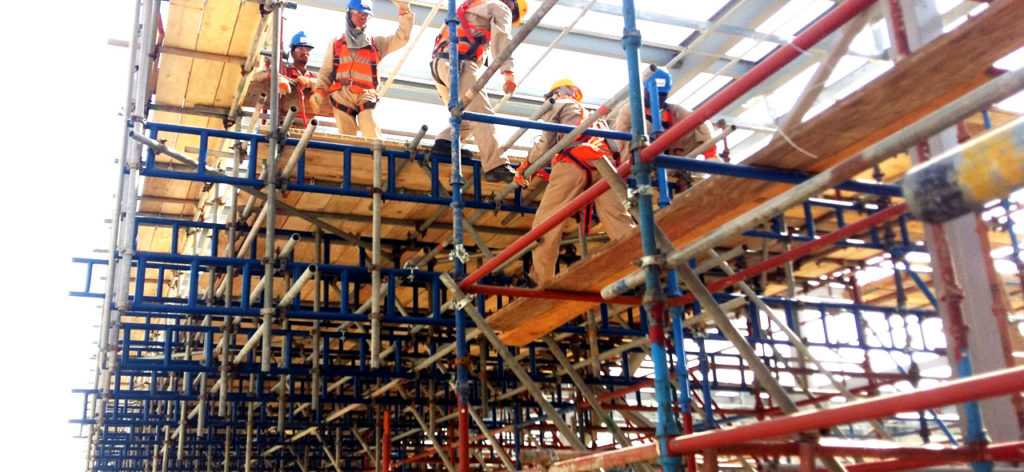
Archaeologists found evidence of scaffolding dating way back to prehistoric times because holes still exist in the walls of Palaeolithic caves at Lascaux in the Dordogne region of southwestern France. Sockets in the walls reveal that a structure resembling scaffoldings was used for staging to enable primitive occupants to paint their famous wall paintings over 17,000 years ago.
There is also evidence to suggest that the ancient Egyptians used wooden scaffolding to create buildings associated with the pyramids. The Greek historian, Herodotus, also wrote the use of scaffold in the construction of the Pyramid. They also used wooden scaffolds to lift the stones to their positions and place them in the correct places. Scaffolds were also used to carve out statues around a big-sized rock from the top to the bottom.
Modern scaffolding started in the early 20th century when metal fixings were introduced in place of rope. It wasn’t until the early 1900s that metal scaffolding tubes as we know them today were introduced.
Prior to this date, lengths of bamboo lashed together with hemp rope were used widely as a method of creating and erecting a scaffold frame. Later on, metal pipes began to be introduced which brought about a revolutionary change in the construction of very tall buildings. Metallic scaffoldings are the main pillars of the modern scaffold business.
In the 1900s Daniel Palmer-Jones known as the ‘Grandfather of Scaffolding’, realized that the newly introduced metal poles for scaffold had a tendency to slip when tied together with ropes. He realized that a set of standard fixings would be a better way of securing both wooden and metal poles alike and, after multiple experiments of varying successes, they eventually came up with “Rapid Scaffixers”.
Following World War II, a massive building program was begun to reconstruct many of the bombed areas of Britain. The first frame system was introduced by SGB, in 1944, and a year later its use was adopted for rebuilding projects throughout the nation, allowing the company to become the successful construction company it is today.
Nowadays we have strict working regulations that continue to shape how the scaffold industry operates and ensure that safety is paramount. Here at SPAR Steel Scaffold, we are proud to be a world safety standard and regulatory authority qualified, approved, and certified scaffolding manufacturer and service provider in UAE, Saudi Arabia, the Middle East, and other MENA countries.
We give peace of mind to our clients regarding products and services supplied to complete their construction and other scaffold-related projects. All our staff holds valid health & safety cards and each crew is trained and lead by highly qualified, skilled, advanced, and certified scaffolding professionals.
Types, Uses, and Importance of Specific Scaffolding
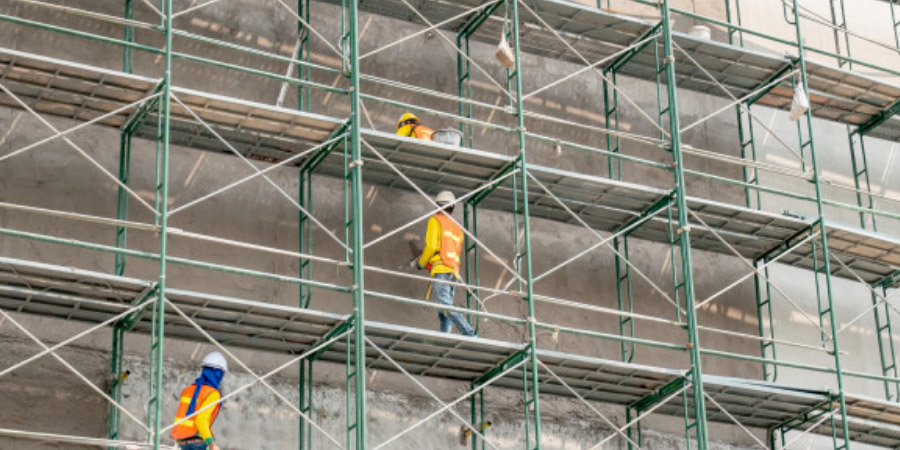
Scaffolding is an essential and integral part of almost all construction projects and has been used ever since the ancient period when the first structures were either built or renovated or painted.
In 2023 Types of scaffolding vary with the type of construction work to get access to structures at height during construction. Sometimes it is used to support workers and their tools, but other times they’re used to support significant loads from building materials, like bricks, blocks, stucco, or cast-in-place concrete, which is called ‘shoring’.
Some of the most important types of scaffolding around the world are:
- Wooden & Bamboo
- Single or Bricklayers
- Double or Mason’s Scaffolding
- Spar Steel or Tubular
- Tube & Clamp
- Cantilever or Needle
- Suspended or Swinging
- Systems
- Cuplock
- Kwikstage
- Haki Staircase Towers
- Frame & Brace
- Mast Climbing
- Shoring scaffolding
Why are so many types of scaffolding there in the world?
The Different Types of scaffoldings are based on many factors, such as the equipment is readily available, the material used, the cost of equipment, types of project, labor cost, their availability, regions, risk, and safety of construction workers, and the platform on which they work.
Depending on where you’re working in the world, different types of scaffolding systems will be more common. Moreover, scaffold made of steel and aluminum depending on the nature and budget of the projects are preferred to be used except for some projects where wooden poles and bamboo scaffoldings are fairly common.
As a designer or scaffolding clients make sure that you’re choosing the system that works best for your project and follows local and international safety regulations.
The most important information about different types of scaffoldings including their applications and the regions where used is given below:
1. Wooden & Bamboo Scaffolding
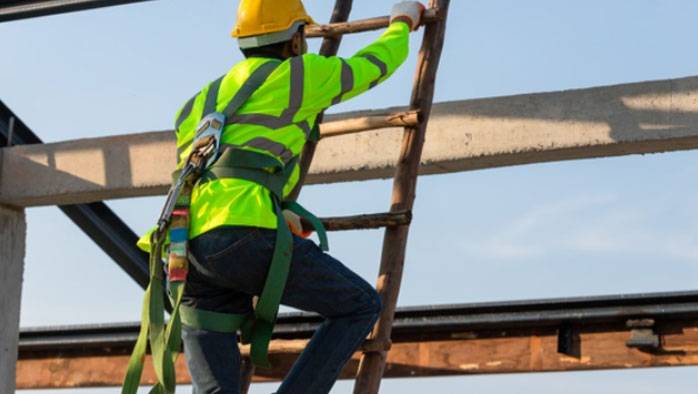
Wooden scaffolding is used almost everywhere and it’s more common outside of North America and Europe. Pre-cut lumber was the most common type of scaffold until steel, and the fabrication of materials became much more affordable.
Bamboo scaffolding is made from bamboo and is used extensively across the world, particularly in Asia and Hong Kong where it’s favored for strength, flexibility, and eco-friendliness. Countries that have tropical climates harvest bamboo as it can grow strong and quick to be used as scaffolding material.
China is home to 500 species of bamboo, which is 40% of all known species in the world. But in most of China, bamboo has largely fallen out of use as a construction material because of safety concerns. Builders favor aluminum and Spar Steel, which they see as higher quality.
2. Single or Brick layer Scaffoldings
It is commonly used for brick masonry and is the so-called brick layer’s scaffolding. Single consists of standards, ledgers, putlogs, etc., which are parallel to the wall at a distance of about 1.2 m. In this, a series of vertical members made of bamboo or timber, known as Standards, are firmly fixed into the ground in a row parallel to the building wall.
The distance between the two standards is generally kept within 2.4 to 3 m. The putlogs i.e. transverse horizontal members are placed at a horizontal spacing of 120 cm such that one end is supported on the ledgers and the other end is held in the holes made in the wall. Rope lashing is used to fasten the putlogs with ledgers.
In case, the height of the scaffolding is very high, then to maintain its stability, sometimes diagonal members i.e. Braces are provided. Braces are cross-diagonally fitted with the standards using rope lashing.
3. Double or Mason’s Scaffolding

Double or Mason’s Scaffolding is commonly used for stone masonry. It is stronger than the brick layer’s scaffolding. In stone walls, it is hard to make holes in the wall to support putlogs. So, two rows of the scaffold are constructed to make it strong whereas in the brick layer’s single row of the standard is fixed into the ground.
The first row is 20 – 30 cm away from the wall and the other one is 1m away from the first row. In this case, putlogs are not fixed with the wall. Put logs are supported at both ends on ledgers. But in the brick layer’s scaffolding, one end of the putlog is fixed with the wall.
To make it strong rakers and cross braces are provided. And there is no need to make any holes in the wall surface. Therefore these are also called independent scaffolds. Sometimes raking shores are provided to prevent the slipping of scaffold away from the wall.
4. Spar Steel or Tubular Scaffolding
Spar Steel or Tubular Scaffolding is made by using steel pipes and tubes which are fixed together by steel couplers or fittings. It is very easy to construct or dismantle. It has greater strength, more durability, and higher fire resistance. It is not economical but will give more safety for workers and construction materials. So, it is used extensively nowadays.
Steel scaffolding is better than brick layers and mason’s scaffolding. In this case, instead of using timber, steel tubes of the diameter of 40 m to 60 mm are used, instead of using rope lashing, special types of steel couples are used for fastening, and instead of fixing the standards into the ground, it is placed on the base plate.
In steel scaffolding structures the gap between two standards in a row is generally kept within 2.5 m to 3 m. These standards are fixed on a square or round steel plate, called a Base Plate, by means of welding. Ledgers are spaced at every rise of 1.8 m. The length of the putlogs is normally 1.2 m to 1.8m.
Spar Steel or Tubular Scaffolding has many advantages in comparison to others such as:
- Steel Scaffolding can be erected or dismantled more rapidly in comparison to timber or bamboo scaffolding. This helps in saving construction time.
- It is more durable than timber, therefore more economical in long run.
- It has more fire-resisting capacity.
- It is more suitable and safe for workers to work at any height.
5. Tube & Clamp Scaffolding
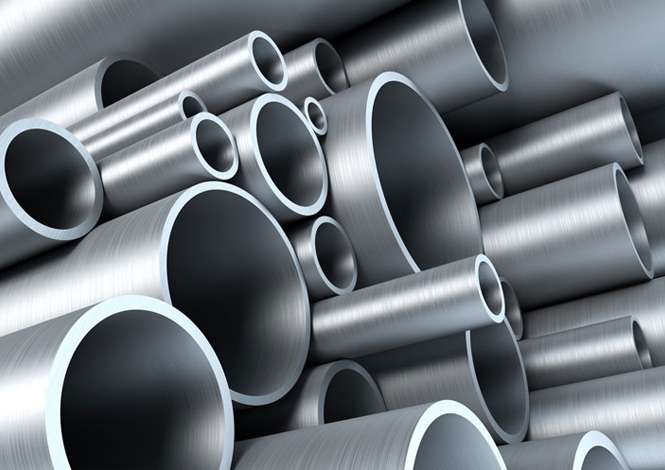
Tube & Clamp Scaffolding is one of the earliest types of steel scaffolding and consists of two parts, including the tubes and clips, which are known as ‘couples.’ To erect the scaffold, there is a need to connect tubes together to make long runs and then connect the verticals and horizontals together with clamps built specifically for these tubes.
This scaffolding system is very flexible to place the verticals as per the need of the work. The steel in this type of scaffolding is specially designed to protect against rust and corrosion, meaning it’s a good choice for regions with harsh weather.
6. Cantilever or Needle Scaffolding
In needle scaffold instead of fixing the standard into the ground, it is placed at some height above the ground level. The platform on which stands are placed is called a needle. A needle is a cantilever structure, made of timber, projected out from the holes in the wall.
Thus, cantilever or needle scaffolding is a temporary supporting platform for construction work in which the standards are supported on a series of needles and these needles are taken out through holes in the wall.
That is why it is called single-frame-type scaffolding. In the other type, needles are strutted inside the floors through the openings and this is called independent or double frame type scaffolding.
Cantilever or Needle Scaffolding is used in the following conditions:
- When the ground does not have the capacity to support standards or not possible to fix standards into the ground.
- When construction is done on the side of a busy street and the ground near the wall is to be free from traffic.
- When construction work is carried out at a very high level in the case of a tall building and the upper part of the wall is under construction.
7. Suspended or Swinging Scaffolding
Suspended or Swinging Scaffolding is a working platform suspended from roofs with the help of wire ropes or chains, etc. which can be raised or lowered to as per the required level. Suspended scaffolds can provide significant savings on very tall structures that need light-duty access, like ongoing building maintenance, repair works, paintings, and small improvements.
8. Systems Scaffolding
Sometimes it is also known as modular scaffolding, which consists mainly of vertical and horizontal pre-engineered components that connect together in a systematic fashion. It is likely the most used type of scaffolding across the globe and there are hundreds of manufacturers, each having specific efficiencies.
Some perform well in very highly loaded conditions and others are more suited to smaller repeated scaffold structures. The term ‘systems scaffolding’ includes many types of scaffold that can be used to create standardized scaffolding bays.
Some of the most popular types of systems scaffolding include:
A. Cuplock Systems Scaffolding
Cuplock Systems Scaffolding is generally made from galvanized steel. It is relevant and reliable for its ability to support heavy loads. With galvanized steel cuplocks at every 500mm to 1,000mm, it creates a highly standardized systems scaffolding base that works well for scaffold designs with repeated patterns.
B. Kwikstage Scaffolding
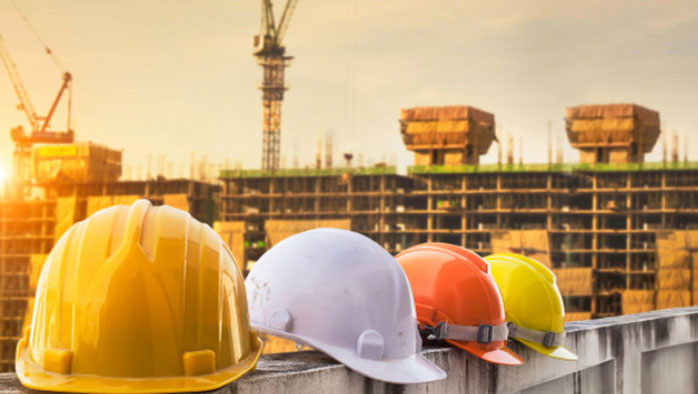
Kwikstage Scaffolding is a quick erection stage modular system. It is used in construction, building tower, and concrete formwork support. It is mostly preferred in Australia and UK as a scaffolding standards tool.
From commercial to residential applications, Kwikstage is both easy to erect and relatively adaptable. With just five components required, it’s easy to assemble and disassemble. Non-slip platforms and double guard rails included with Kwikstage improve its safety and reliability.
C. Haki Staircase Towers
The Haki Stair Tower system consists of Haki universal standards, beams, diagonal braces and guardrails, and other components that are designed specifically for stair towers, such as landings, stair flights, handrails, toe-boards, etc. Its components are hot-dip galvanized.
These staircases are a part of the scaffold structure that enables the workers to travel from level to level, but sometimes a stair tower is used on its own. These scaffolds are also designed for worker’s safety and their temporary access to a section of the building.
9. Frame & Brace Scaffolding
Fabricated frame and brace scaffolding consist of frames, braces, planks, and bases. This scaffold is very light and can be erected very quickly. It’s important to note that these are not as strong as system scaffolding.
Fabricated frame and brace scaffolds are the most common type of scaffolds because they are versatile, economical, and easy to use in small-scale projects where scaffolding could be made mobile.
They are frequently used in one or two tiers by residential contractors, painters, etc., but their modular frames can also be stacked several stories high for use on large-scale construction jobs. This scaffolding is very common for residential and commercial applications in North America and Europe.
10. Mast Climbing Scaffolding
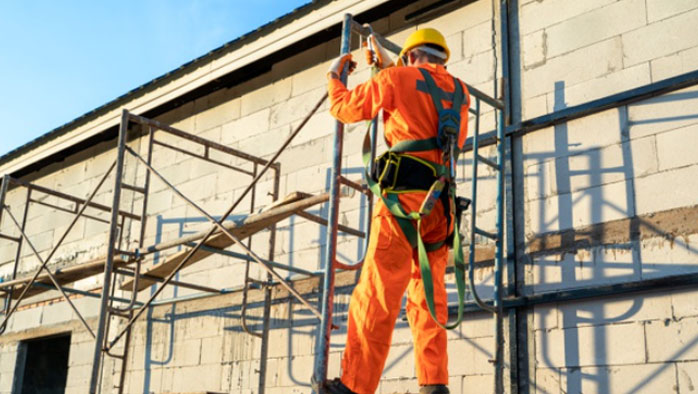
Mast Climbing Scaffolding is similar to suspended scaffolds, it can extend to various heights. Instead of hanging from wires, it can climb up and down on fixed mast structures that are placed on the ground. It is preferred by scaffolders who need to support heavy loads.
In case of a brick or block wall that needs to be built, a mast climbing scaffold is used as it can be adjusted to get to various heights in small increments. These scaffolds range in height, some only a few floors tall while others climb several stories.
As most climbers don’t require a significant amount of space at the base of the structure, they are ideal for projects with limited ground area.
11. Shoring Scaffolding
Shoring scaffolding is a system that supports ceilings, walls, and trenches (shoring). They are designed to be able to mechanically telescope to about twice their shortest length in order to span a wide variety of spaces.
Whenever is a concrete slab for a building floor, the concrete is almost certainly poured on top of a form in order to hold the liquid concrete until it changes into a solid that can support itself. Most often the structure underneath consists of scaffolds.
Spar Steel standard quality product materials and scaffolding services which meet OSHA, ARAMCO, Adnoc, Enoc, UAE, and SABIC specifications, and testing are:
A. Spar Steel Scaffold Products
- Pipes & Tubes: HR (Black), Galvanized (Hot-Dip), or Pre-galvanized types of Round Tubes, Square Tubes, Rectangular Tubes, ERW pipes…
- Cuplock Systems: Vertical Standard (Open End), Ledger (Horizontal), Intermediate
Transom (Horizontal)
- Ringlock Systems: Ledgers, Braces, Hop-Up Bracket, Base Collar…
- Tube and Fittings: Galvanised Iron Tubes, Double Coupler, Swivel Coupler, Putlog Coupler, Grider-Coupler, Board Retaining Clamp, Toe Board Couplers, Sleeve Coupler, Ladder Clamp, Rocking Or Swivel Base Plate, Adjustable U Head Jack, Ladder Beams, Ladders, Heavy Duty Self-Closing Gate, Base Plate, Adjustable Base Jack…
- Scaffolding Steel Boards/Plank: Lvl Wooden Scaffold Board, Steel Boards without
Hooks, Steel Boards with Hooks…
- Ladder & Lattice Beams: Scaffolding Ladder Beams, Ladders, Lattice Beams…
B. Spar Steel Scaffolding Services
- Contract Scaffolding Services: Construction and plant maintenance in Oil & Gas and Petrochemical sector
- Hire and Sales: With the i-Hire Inventory Management System and control the movement of the equipment throughout the different branches and client Projects around KSA.
- Scaffolding Design & Inspection: conforming to various standards viz. British, European, American, Australian, Saudi Aramco, and other Middle East client/project specifications.
- Coil Slitting Services
- Tube Conversion Services
- Manpower/Training Supply:
- Manpower— On a short-term and long-term basis for their requirements during Turn around, shutdowns, operation, maintenance, construction, and contracting, etc.
- Training— Basic Awareness, Intermediate, & Advanced Scaffold Training…
Support Services
- Design – Specialized Access Scaffold.
- Design – Formwork & Falsework
- House Scaffolding Training
- Health and Safety Training
Moreover, by keeping the safety and security of scaffolds structure and workers, scaffold customers should not compromise on the kinds and quality of scaffolding products and services used in scaffolding
Locations for Spar Group Scaffolding Products & Services
For Spar Steel quality scaffolding products and services based on OSHA, Saudi Aramco, and Adnoc, Enoc, UAE safety standards and rules, clients can contact the following addresses given below:
You can also contact or follow us on our social media networks like Facebook and Twitter
1. RAK – UAE
SPAR STEEL INDUSTRIES LLC
PO Box 37374, Plot No. P111,
Al Ghail Industrial Park,
Ras Al Khaimah, UAE
Tel: +971 7258 9988
Fax: +971 7228 1737
Email: info@sparsteel.com
Website: www.sparsteel.com
2. DUBAI – UAE
SPAR TRADING LLC
PO Box 15188,
815 F – Ibn Battuta Gate Offices,
Sheikh Zayed Road, Dubai,
United Arab Emirates
Tel: +971 549 985054
Tel:: +971 455 78125
Email: uae@sparindustries.com
3. JUBAIL- KSA (H O)
ARABIAN SPAR CO. LTD
King Abdullah Road, After Flyover, Behind KPS 33
Post Box -1396, Al- Jubail – 31951,
Kingdom of Saudi Arabia
Tel : +966 (13) 3619096, +966 (13) 3627320
Fax: 966 (13) 3618032
Email: info@arabianspar.com
4. RIYADH KSA
ARABIAN SPAR CO. LTD
PO Box 4424, Ring Road, Exit-22,
Faryan Street, Riyadh-14515
Saudi Arabia
Mobile: +966 533762893
Tel: +966 11 2044947
Fax: +966 11 2044947
email: info@arabianspar.com
5. FACTORY
SPAR SCAFFOLDING FACTORY
Near Riyadh and Saudi
Fransi Bank Behind KPS 33
Al Jubail KSA
Tel : +966 (0)13-3627320
6. UK
SPAR SCAFFOLDING LTD.
Suite No. 2, Frendown, Wooderford Road, London England, E18 2 ED
Tel: +971 7258 9988
works.
5 Comments
Add a Comment
You must be logged in to post a comment.

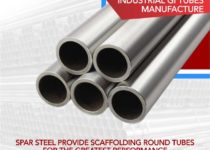
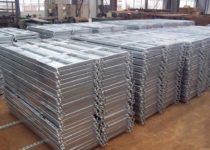

It is extremely nice to see the greatest details presented in an easy and understanding manner.
Thanks & please keep up the effective good work
Excellent idea and good work. I feel this is often engaging and eye-opening material. many thanks such a lot for caring about your products content & for your visitors. you’ve got made me inspired! Thank you so much for yours efforts!
It is extremely nice to see the greatest details presented in an easy and understanding good write up please keep up.
Nice blog along with the excellent quality stuff and I’m sure it is really helpful post please keep continuing to writing.
Great! This is tempting studying. i am happy i found this and got to entry it. great job upon this content material. Thank you for the omnipresent and particular information.